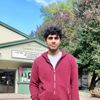Typical infectious disease modelling is done with an SIR (Susceptible-Infected-Recovered) model. We assume members of the population are either Susceptible (not infected yet), Infected (currently infected and capable of infecting others), or Recovered (immune and unable to infect others). The average number of people each infected person transmits the disease to is called the infection rate, or R0.
Economist Luzius Meisser makes an interesting point about most of the current modelling done for the Coronavirus – we seem to assume that every person is equally likely to infect R0 other people. With this assumption, we need a very large proportion of the population to be recovered before the outbreak stops, between 60-80%.
In reality, some people are much more likely to spread the disease, because they have more social interactions – think about Uber drivers, estate agents, hospital staff, and so on. The distribution of social interactions, and therefore of spreaders of the disease, is likely to follow a power law – 20% of people resulting in 80% of the spread for example. Once such 'super spreaders' have been infected and have recovered, they won't be able to spread the disease any more. Building a simple SIR model that takes the power-law distribution of social interactions into account it appears that the outbreak could stop even if only 10% of the population has been infected.
Luzius' model is here. It's certainly an interesting thought, and I suspect there is probably some truth to the 'super spreaders' idea. But how accurately it applies to the Coronavirus outbreak won't be clear for many weeks if not months.
